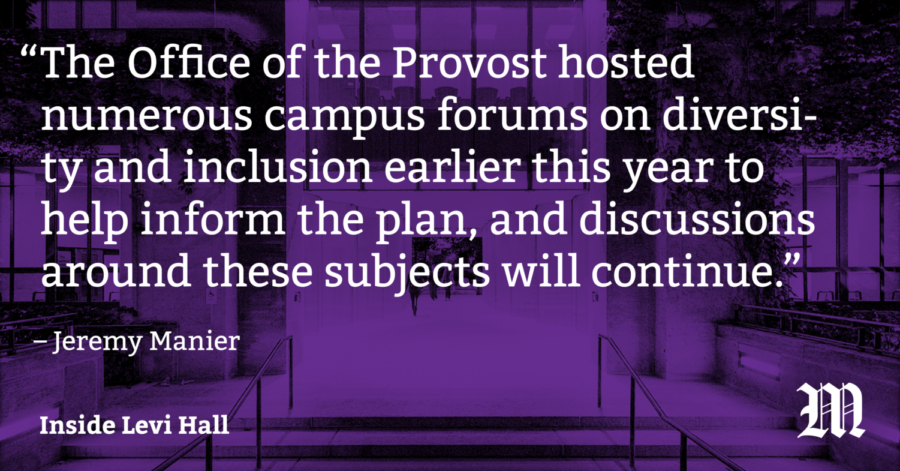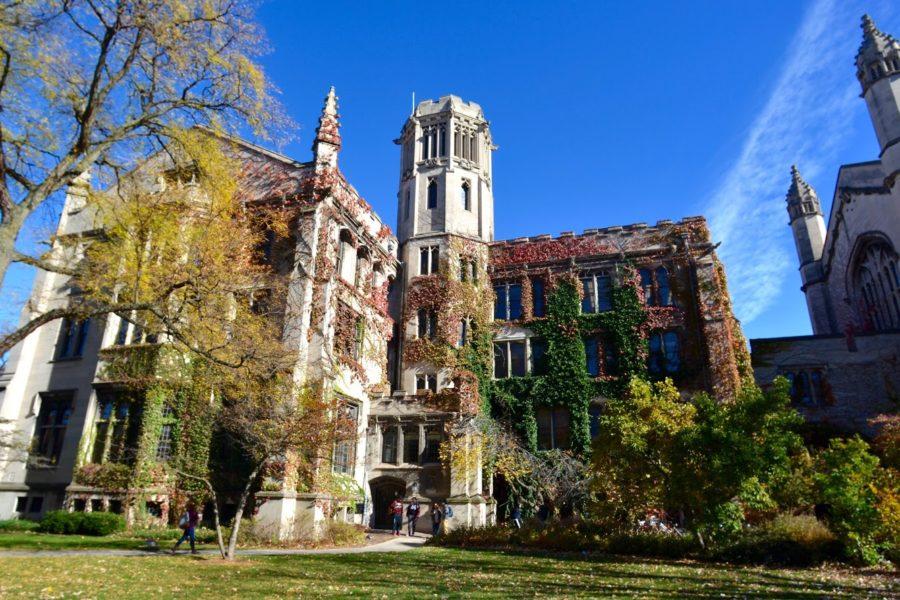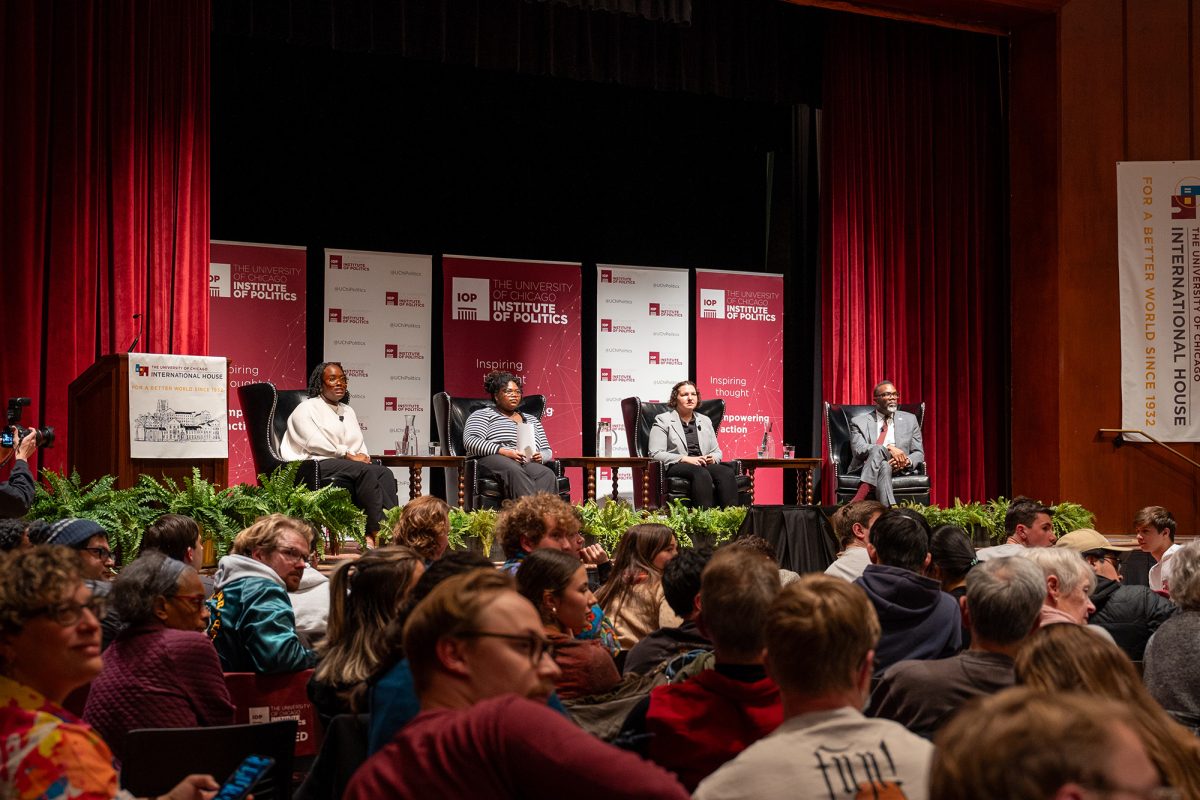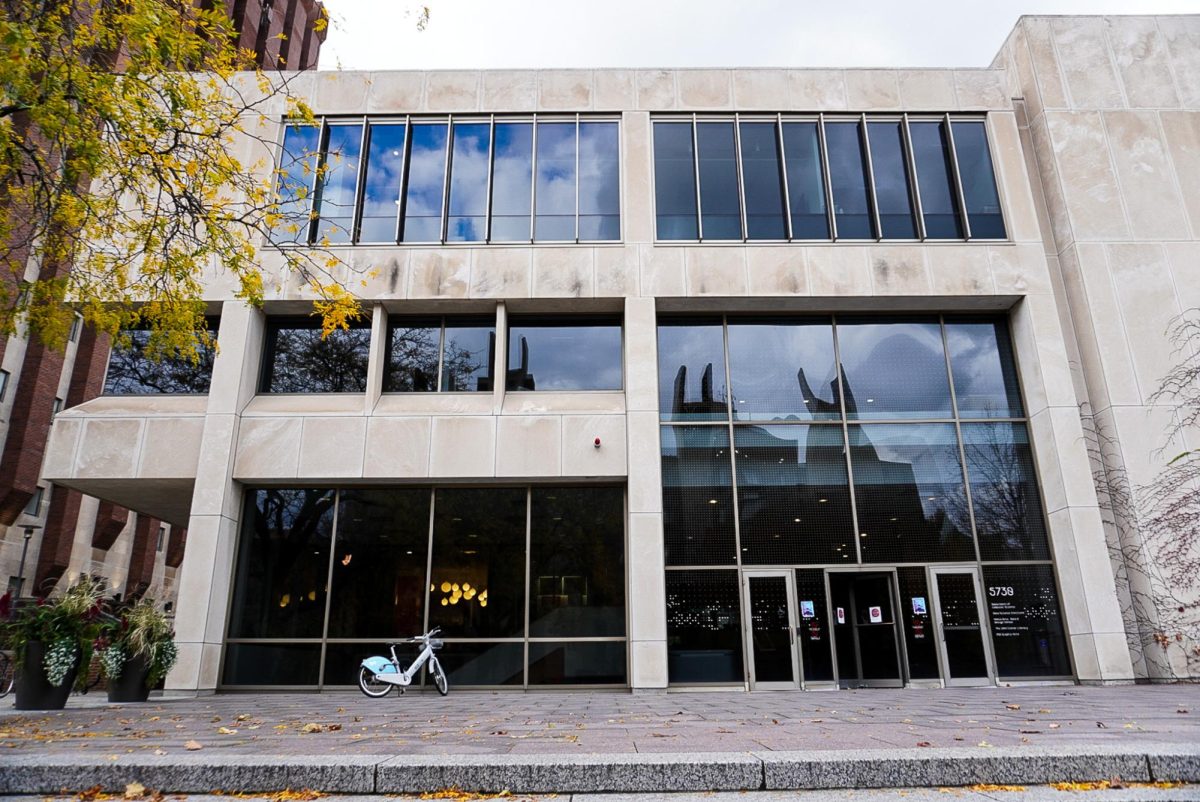This article was based on a set of internal administration documents given to The Maroon last month. More information on these documents can be found here.
The administration has begun planning a strategy to improve diversity and inclusion at the University.
A private administrative draft of a 10-page document titled “Diversity + Inclusion Initiative—First Year Plan” shows the administration is considering a list of initiatives designed to make the University more diverse and inclusive.
The document appears to be a very early draft of the plan, and much of the document is incomplete. Many paragraphs still contain placeholder text and notes. Still, the document offers a look at how the University plans to take action—or at least a look into how the University was planning to take action at the time the document was reviewed.
The draft comes after years of climate surveys, diversity council meetings, and community forums that revealed institutional shortcomings.
The document details a number of concrete and potentially near-term actions the University may be poised to take—for example, hiring diverse faculty in “clusters” and creating a “visual map” of all of the University’s diversity efforts.
It shows that the University has apparently considered what it's calling the “Ivy plus program,” which would establish a pipeline to prepare more minorities for faculty positions at elite colleges.
The document also suggests that changes may be coming to the Core curriculum in the College as part of the University’s diversity and inclusion efforts.
In January 2017, a “Diversity Advisory Council” (DAC) composed of students and faculty produced a major report that preceded this stage of the University’s planning. The DAC recommended the University commit to the ambitious goal of doubling its underrepresented minority (URM) faculty by 2026.
While the administration may act on many of the recommendations put forth by the DAC, the draft procured by The Maroon does not commit to or mention the 2026 DAC target.
The document is based on the idea that the administration alone cannot solve the campus’s diversity and inclusion problems. The draft outlines ways in which the University community would continue to be involved: through more committees, more research, and more feedback.
On August 9, a University spokesperson issued a general statement to The Maroon in response to a list of specific questions sent on August 3. The statement appears to acknowledge that the document is real while simultaneously insinuating that the information in the document is not the University’s final plan.
“The material you have is not the plan — it’s a document that reflects early ideas and uses Latin placeholders to help determine the layout of an eventual plan document,” University spokesperson Jeremy Manier said in an e-mail. “It would be inappropriate for me to speculate on what the plan might contain while that work is ongoing. The Office of the Provost hosted numerous campus forums on diversity and inclusion earlier this year to help inform the plan, and discussions around these subjects will continue.”
Manier declined to answer additional questions about this statement.
The University has said it anticipates issuing its plan in 2017.
Timeline
A series of incidents in fall 2014—including a controversy over racist Halloween costumes and a racist threat posted to a student activist’s purportedly hacked Facebook page—catalyzed a campus-wide conversation on race. (The Facebook post itself was later revealed to be a hoax.)
A petition posted in that time period calling on the administration to “address the culture of racial intolerance” at the University garnered more than 2,000 signatures and was presented to administrators later that month. In support of the petition, a group of protestors led chants in the Harper Library reading room. A separate faculty petition demanded the administration create a “long-term plan” around issues of race relations.
The administration promised in a school-wide message to follow up with specific actions the University would take to maintain “a diverse campus environment free from harassment and discrimination.” In December 2014, the University said it would undertake a major survey project to get data on the “campus climate” relating to diversity and inclusion and would convene a “Diversity Advisory Council” to advise the University on “further steps we can take to increase the diversity of our faculty, students, and staff.”
In spring 2016, the University released preliminary results from the campus climate survey. The survey did not paint a particularly rosy picture of minority experiences at the University of Chicago. Among other findings, 40 percent of black students surveyed said the overall environment was racist.
In January, the DAC issued its report. The committee identified institutional lapses and recommended that the University commit to several ambitious goals.
Admin’s turn to act
The administration has invested significant resources to take stock of how the University of Chicago community feels about the state of diversity and inclusion on this campus. This document shows that the administration is in the process of outlining the steps it will take to try and address identified problems.
The draft obtained by The Maroon identifies five general areas for the University’s efforts around diversity and inclusion: “infrastructure, people, climate + community, distinctive and empowering education, and inclusive inquiry.”
A paragraph notes that these areas of focus may be reassessed and updated to reflect the “current needs of the campus,” though “other topics will remain as evergreen, as we see diversity work as a process, not an end goal.”
A paragraph about how the University will measure the success of its actions notes that “the plan should be owned and implemented by the campus not the Provost’s office.”
“People”
The draft says the University will take several “actions to identify, recruit and retain faculty, students and staff, with a focus on those who have been historically underrepresented in academia.”
-
The administration could develop policies on hiring underrepresented minority faculty and it will “pursue cluster hires and target of opportunity hires.” The document says that the “long-term goal is that departments will hire URM faculty without support from the Provost’s Office.”
-
Cluster hiring, as described by other institutions, involves the search of multiple faculty members at once. The practice is typically used to add high-profile faculty in emerging—and often interdisciplinary—fields or to quickly increase faculty diversity.
-
Target of opportunity hiring refers to the practice of hiring faculty without a national search, and it can be used to add minority faculty.
-
-
One subsection of the “people” area describes a new initiative called the “Ivy plus program.” The subsection reads, “This UChicago-led initiative will bring the Ivy+ together to create a cross-institutional pipeline program that could increase the overall pool of URM prepared for academic faculty positions.” Another document given to The Maroon lists “Ivy Plus Budgeting Group” as an agenda item for a June 30 meeting with the Provost.
-
The University could conduct development courses for “mid-level” faculty that would “address underrepresentation of women and URMs in academic leadership positions.” The DAC report had recommended that women and URMs be considered for top-level administrative positions, including positions in the president’s and provost’s offices when they become available.
-
There could be staff training programs on “best practices” for hiring.
-
An existing Provost’s Postdoctoral Fellows Program is mentioned. The document reads, “As a University-wide program, the University would then pay for scholars in areas outside of the scope” of what can be supported by the grant that funded the postdoctoral program.
“Community + Climate”
The draft includes new initiatives to “foster new campus relationships to create a supportive, inclusive environment for all.”
-
A “Subcommittee on Student Experience” could convene working groups around specific identities (eg. “black students, Muslim students, first generation students…”). Each working group “will create a document to inform the University on concrete actions to take to improve the climate for the specific population.”
-
There could be faculty mentoring programs “focused on early-stage faculty.”
-
The University could create “Employee Resource Groups” open to all members of campus around “specific identity or affinity areas.”
-
The renowned comedy theater The Second City could partner with the Booth Business School’s Center for Decision Research (CDR) to create “programs for campus units on self expression and understanding in diverse groups.” (The Second City already has a collaboration with Booth.)
“Distinctive + Empowering Education”
This portion of the draft is about “teaching students, faculty and staff through rigorous, evidence-based trainings.”
-
The University might convene a committee to “consider core courses.” The document gives almost no information as to what is being considered, but given its nature, any modifications to Core courses up for consideration would presumably have some relation to diversity and inclusion.
-
According to the draft, Dean of the College John W. Boyer is “enthusiastic” about the prospect, and is “focusing on urban studies as another area that has relevance to diversity and inclusion.” The DAC report endorsed “the process, underway currently, for faculty to design and propose a new College Core class dealing with race and society.”
-
This may be a rare case in which the University of Chicago acts on a non-binding resolution passed by the undergraduate student government body. The Maroon reported in May 2016 that College Council passed a resolution that called on Boyer and then-provost Eric Isaacs to diversify the social sciences core curriculum.
-
-
There could be “staff development programs” because the “Climate survey has revealed lack [sic] of professional development opportunities for staff and that current opportunities are cost prohibitive.”
-
Chair development programs could be expanded: “The peer leadership development program was created for chairs and is now being piloted with faculty. These programs would address chair development overall with specific attention to their abilities on issues of diversity and inclusion.”
“Inclusive Inquiry”
This part of the draft is concerned with “creating and sharing new knowledge around successful diversity interventions.”
-
The document says the provost will award a grant three times a year to a faculty member, a postdoc, a staff member, or a student for “behavioral science and other innovative, data-driven approaches to creating an inclusive [climate].” The document says there will be a second request for proposal (RFP) for creating “inclusive curriculum and teaching.”
-
A website could be created that would take community feedback on the University’s diversity and inclusion efforts. Focus groups, surveys, and further data gathering could also help assess and guide the University’s diversity plan.
“Infrastructure”
The draft of the “Infrastructure” portion of the document identifies three initiatives toward “building infrastructure that allows the institution to support the work of the D&I plan.”
-
The Provost’s office could task each department, division, and unit with creating a diversity and inclusion plan.
-
The University could partner with its Research Computing Center to “create a visual map” of all of the University’s diversity efforts.
-
The University could “engage existing centers and institutes” with expertise on diversity and inclusion.








